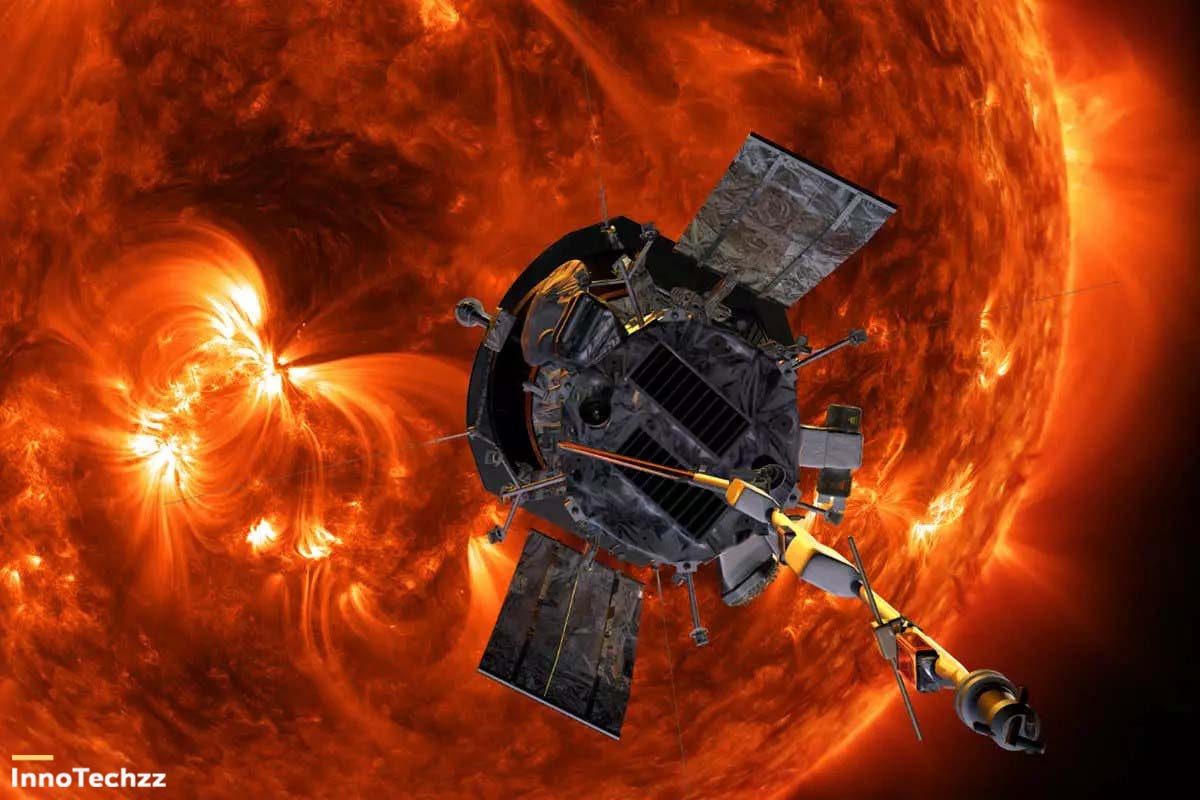Any technology that could lead the robotic machine to explore the sun ?

Technically its possible to a some extent. Recently NASA Enters the Solar Atmosphere for the First Time, Bringing New Discoveries.
A spacecraft has touched the Sun for the first time in history. NASA's Parker Solar Probe has now collected particles and magnetic fields in the Sun's upper atmosphere, known as the corona.
The latest achievement is a huge step forward for the Parker Solar Probe and a giant leap forward for solar science. Touching the same stuff the Sun is made of will help scientists explore crucial knowledge about our closest star and its influence on the solar system, just as landing on the Moon allowed scientists to understand how it was formed.
"The Parker Solar Probe "touching the Sun" is a game changer in solar science and a really spectacular achievement," said Thomas Zurbuchen, assistant administrator for NASA's Science Mission Directorate in Washington. "Not only does this achievement provide us a better understanding of our Sun's evolution and its effects on our solar system, but everything we learn about our own star tells us more about stars throughout the universe."
Parker is finding new discoveries that other spacecraft couldn't observe because they were too far away, including from within the solar wind, which is the flow of particles from the Sun that can affect us on Earth. Parker revealed in 2019 that magnetic zig-zag formations in the solar wind, known as switchbacks, are abundant near the Sun. However, it remained a mystery as to how and where they formed. Parker Solar Probe has now travelled close enough to identify one spot where they originate: the solar surface, after halving the distance to the Sun since then.
The first flyby into the corona – and the promise of many to come – will continue to deliver information on processes that are difficult to examine from afar.
"Flying so close to the Sun, the Parker Solar Probe is now detecting conditions in the magnetically dominated layer of the solar atmosphere – the corona – that we have never been able to detect before," said Nour Raouafi, Parker project scientist at the Johns Hopkins Applied Physics Laboratory in Laurel, Maryland. "In magnetic field data, solar wind data, and visually in photos, they see signs of being in the corona. The spacecraft can be seen travelling through coronal formations that are visible during a total solar eclipse."
Closer Than Ever Before
Parker Solar Probe was launched in 2018 with the goal of delving deeper into the secrets of the Sun by journeying closer to it than any previous spacecraft. Parker has finally come three years after its introduction and decades after its creation.
The Sun, unlike Earth, does not have a solid surface. It does, however, have a superheated atmosphere made of solar material that is gravitationally and magnetically bonded to the Sun. As the material is pushed away from the Sun by increased heat and pressure, it reaches a point where gravity and magnetic fields are no longer strong enough to retain it.
The end of the solar atmosphere and the start of the solar wind are marked by the Alfvén critical surface. Solar material having enough energy to pass that limit creates the solar wind, which carries the Sun's magnetic field with it as it speeds through the solar system to Earth and beyond. Importantly, the solar wind moves so fast beyond the Alfvén critical surface that waves inside the wind can never travel fast enough to return to the Sun, severing their connection.
Parker Solar Probe encountered specific magnetic and particle conditions at 18.8 solar radii (around 8.1 million miles) above the solar surface on April 28, 2021, during its eighth flyby of the Sun, indicating it had crossed the Alfvén critical surface for the first time and finally entered the solar atmosphere.
"NASA was fully expecting to encounter the corona for at least a short period of time sooner or later," said Justin Kasper, deputy chief technology officer at BWX Technologies, Inc. and University of Michigan professor, and lead author of a new paper about the milestone published in Physical Review Letters. "However, the fact that we've already reached is quite thrilling."
Posted By InnoTechzz